TRANSFORMATIONS OF LINEAR AND ABSOLUTE VALUE FUNCTIONS
write a function g whose graph represents the indicated transformation of the graph of f. Use a graphing calculator to check your answer.
Problem 1 :
f(x) = x − 5; translation 4 units to the left
Solution :
f(x) = x − 5
Given transformation :
Translation 4 units to the left
Let g(x) be the new function after the transformation.
f(x - (-4)) = x - (-4) − 5
= x + 4 - 5
g(x) = x - 1
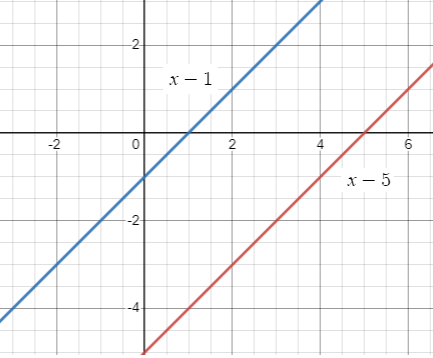
Problem 2 :
f(x) = x + 2; translation 2 units to the right
Solution :
f(x) = x + 2
Given transformation :
Translation 2 units to the right
Let g(x) be the new function after the transformation.
f(x - 2) = x - 2 + 2
g(x) = x
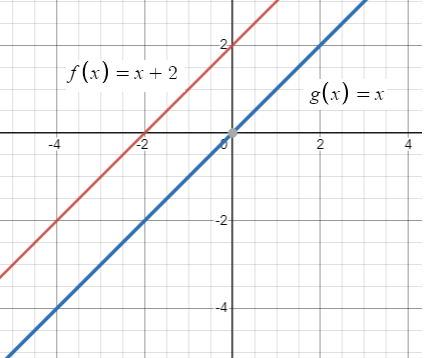
Problem 3 :
f(x) = ∣4x + 3 ∣ + 2; translation 2 units down
Solution :
f(x) = ∣4x + 3 ∣ + 2
Given transformation :
translation 2 units down
Let g(x) be the new function after the transformation.
f(x) - 2 = ∣4x + 3 ∣ + 2 - 2
g(x) = |4x + 3|
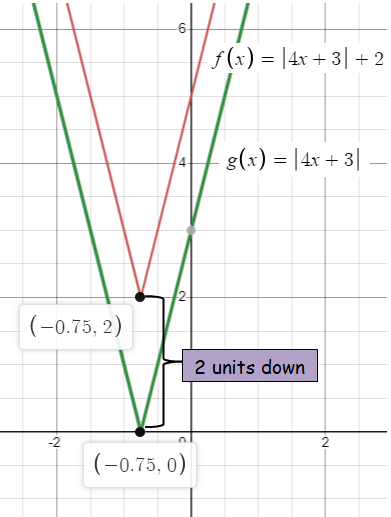
Problem 4 :
f(x) = 2x − 9; translation 6 units up
Solution :
f(x) = 2x - 9
Given transformation :
translation 6 units up
Let g(x) be the new function after the transformation.
f(x) + 6 = 2x - 9 + 6
g(x) = 2x - 3
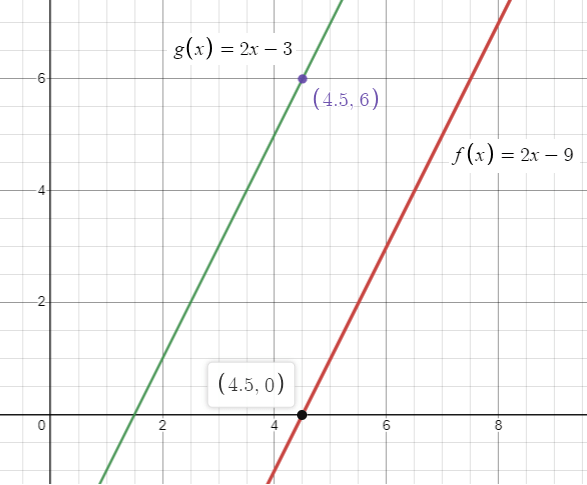
Problem 6 :
f(x) = 3x; translation 5 units up
Solution :
Given transformation :
translation 5 units up
Let g(x) be the new function after the transformation.
f(x) + 5 = 3x + 5
g(x) = 3x + 5
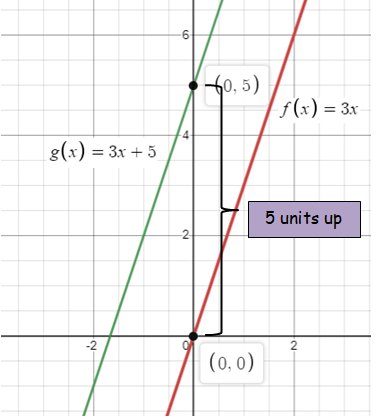
Problem 7 :
f(x) = ∣x∣ − 3; translation 4 units to the right
Solution :
Given transformation :
translation 4 units to the right.
Let g(x) be the new function after the transformation.
f(x - 4) = ∣x - 4∣ − 3
= ∣x - 4∣ − 3
g(x) = ∣x - 4∣ − 3
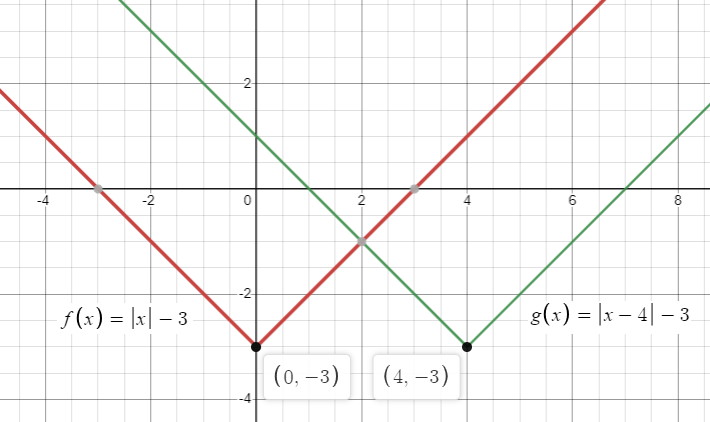
Problem 8 :
f(x) = −∣x + 2 ∣ − 1; reflection in the x-axis
Solution :
Given transformation :
reflection in the x-axis
Let g(x) be the new function after the transformation.
f(x) = −∣x + 2 ∣ − 1
-f(x) = -[−∣x + 2 ∣ − 1]
= ∣x + 2 ∣ + 1
g(x) = ∣x + 2 ∣ + 1
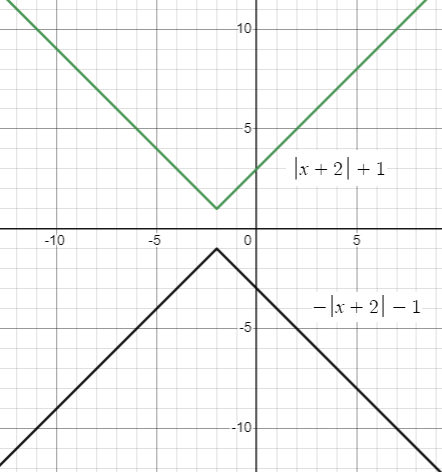
Problem 9 :
f(x) = (1/2) x + 1; reflection in the y-axis
Solution :
Given transformation :
reflection in the y-axis
Let g(x) be the new function after the transformation.
f(-x) = (1/2) (-x) + 1
g(x) = -(1/2) (x) + 1
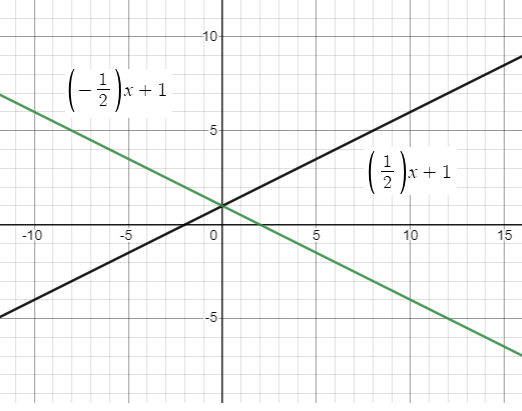
write a function g whose graph represents the indicated transformations of the graph of f.
Problem 10 :
f(x) = x; vertical stretch by a factor of 2 followed by a translation 1 unit up
Solution :
f(x) = x
Vertical factor 2 units and vertical translation of 1 unit up. Let the new function will be g(x).
f(x) = 2x + 1
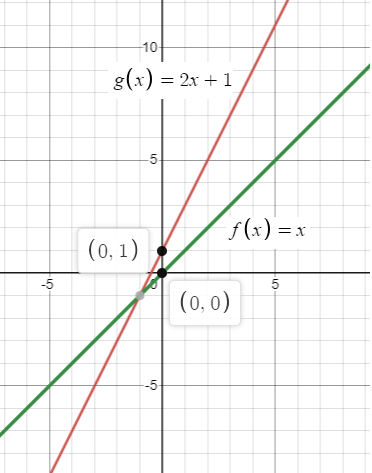
Problem 11 :
f(x) = x; translation 3 units down followed by a vertical shrink by a factor of 1/3
Solution :
f(x) = x
Translation of 3 units down and vertical shrink of 1/3. Let the new function will be g(x).
g(x) = (1/3) x + 3
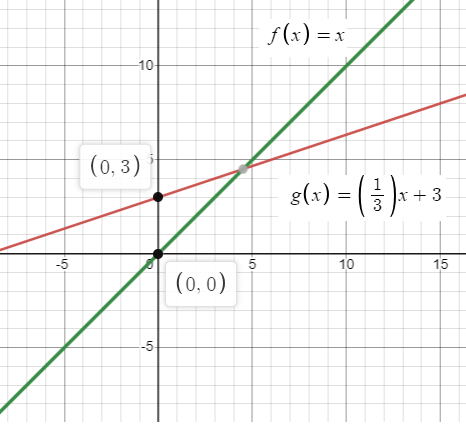
Problem 12 :
f(x) = ∣x∣; translation 2 units to the right followed by a horizontal stretch by a factor of 2
Solution :
f(x) = ∣x∣
Translation of 2 units right and horizontal stretch by the factor of 2. Let g(x) be the new function.
First we have to do stretch and then do the translation.
f((1/2) x - 2) = ∣(1/2)x - 2|
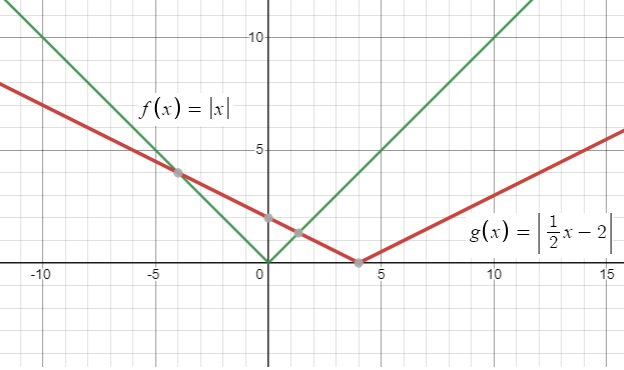
Problem 13 :
f(x) = ∣x∣ ; reflection in the y-axis followed by a translation 3 units to the right
Solution :
f(x) = ∣x∣
Reflection in the y-axis and then translation. Replace x as -x.
Let the new function will be g(x). After applying the reflection, we get
g(x) = |-x| ==> |x|
After the translation,
g(x) = |x - 3|
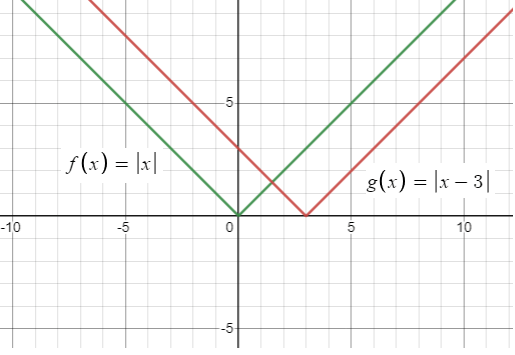
Recent Articles
-
Finding Range of Values Inequality Problems
May 21, 24 08:51 PM
Finding Range of Values Inequality Problems -
Solving Two Step Inequality Word Problems
May 21, 24 08:51 AM
Solving Two Step Inequality Word Problems -
Exponential Function Context and Data Modeling
May 20, 24 10:45 PM
Exponential Function Context and Data Modeling